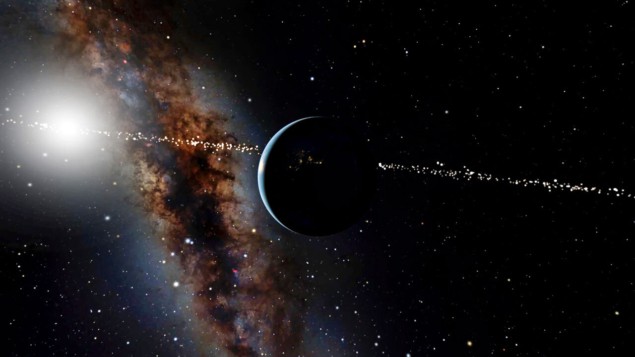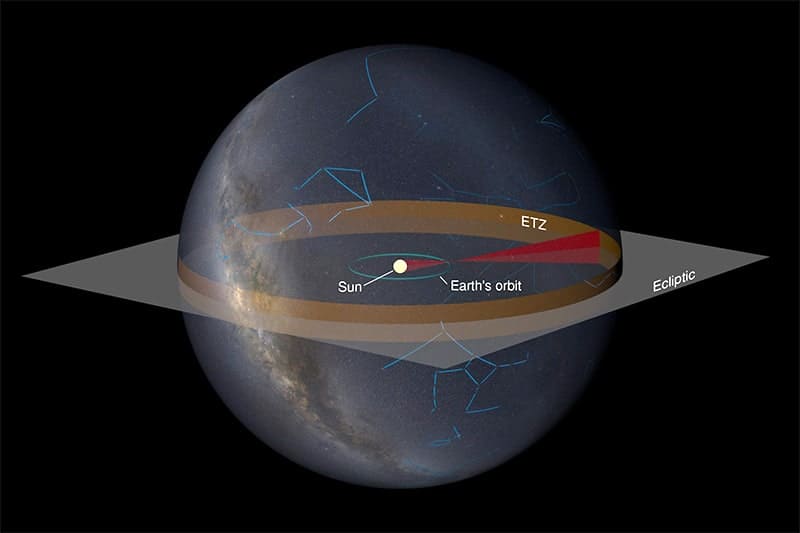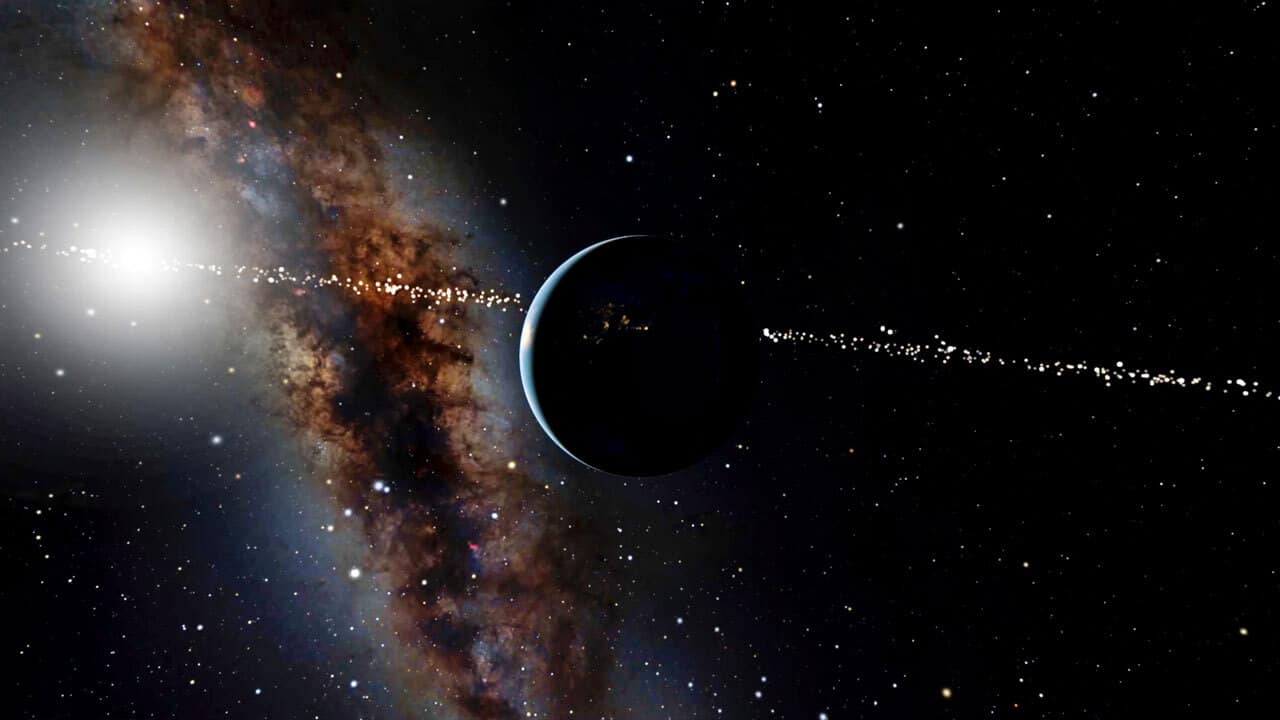
Over the past 25 years astronomers have observed thousands exoplanets – planets that orbit stars other than the Sun. So, it stands to reason that alien astronomers on exoplanets may have observed Earth. Now, Lisa Kaltenegger, director of Cornell University’s Carl Sagan Institute, and astrophysicist Jackie Faherty, a senior scientist at the American Museum of Natural History have created a catalogue of nearly 2000 nearby stars from which an observer on an exoplanet could spot Earth using the transit method.
A transit can be observed when an exoplanet’s orbit takes it in front of its star as viewed from Earth. This causes a periodic dip in light from the star and such observations play an important role in the ongoing discovery of exoplanets.
“We identified 1715 stars within about 300 light–years from the Sun that are in the right position to have spotted a transiting Earth from around 5000 years ago, a period that roughly corresponds with the rise of humanity,” Kaltenegger tells Physics World. “Because the universe is dynamic, and stars move, this cosmic front row seat is both gained and lost. An additional 319 stars will enter this special vantage point in the next 5000 years.”
Tuning in to Earth
The duo imposed a further limiting distance of 100 light–years to highlight worlds that could have received human-transmitted radio waves since the dawn of radio stations around a century ago. Estimating that around 25% of stars are orbited by potentially habitable rocky exoplanets, the scientists calculated the number of Earth-like worlds that fall within these distances.
“Within the 300 light–years there should be about 500 potential habitable worlds, within 100 light–years you find 29 planets that radio waves will have already washed over,” explains Kaltenegger. Although astronomers have not probed this region for Earth-like exoplanets, it crowded with stars and we already know of seven exoplanets in the habitable zones of their stars – orbits that favour the emergence of life.
“Who knows if life evolved there too, but if it did, and it had a similar technology level that we have, then such nominal alien observers could have spotted or will spot life on our own world.”
Image of the Milky Way
The duo’s work marks the first time that researchers have considered the Earth-transit vantage point as a changing system. This has been made possible by a recent data release from European Space Agency’s Gaia space telescope, which is creating a 3D image of the Milky Way.
“There have been other phenomenal catalogues that preceded Gaia but no other observatory reached the same quantity and depth,” explains Faherty. “Gaia is capable of mapping the lowest mass stars – the M class dwarfs – in tremendous detail and they are the most numerous stars in the galaxy.”
Faherty explains that instead of asking the question “What can see us right now?” Gaia allowed the duo to “wind the clock backwards and forwards” to see where the stars’ motions have taken them and how long they have been able to occupy the perfect seat to see Earth as a transiting planet.
“The Gaia Catalogue has enabled a fresh and detailed dynamic look at the galaxy,” she adds.
Amongst the systems that have enjoyed prime Earth-viewing time in the past is Ross 128, which is 11 light–years from Earth. The system consists of a red-dwarf star orbited by Ross 128 b, a super-Earth with a diameter around twice that of our planet.
“Intelligent life on Earth”
“Any civilization with our level of technology could have seen us already on Ross 128b but lost that vantage point about 900 years ago . Would anyone have concluded that there was intelligent life on Earth 900 years ago?” asks Kaltenegger.
The Trappist-1 system with its seven exoplanets will enter the Earth Transit Zone in around 1640 years. It is about 45 light-years away and at least four of its exoplanets occupy that system’s habitable zone and will remain in front row seats for around 2300 years.
Whilst Earth moves into view for these exoplanets, astronomers continue to perfect the tools they use to discover and investigate planets outside the solar system. Playing a key role in this work will be the James Webb Space Telescope (JWST), which should launch later this year.

Where to look for signals from alien astronomers with a good view of Earth
“If there are worlds around any of these stars, then we can use JWST to try and glean information about their atmospheres,” says Faherty. “Astronomers are hot on the trail of tracking down what biosignatures might reveal themselves using sophisticated light gathering techniques.”
Whilst we are searching for those markers with increasingly sophisticated equipment, it is enthralling to entertain the idea that other life forms could be simultaneously searching for us.
“To me this research embeds us in not only space but also in time, telling us that we are lucky to find the exoplanets we do because our cosmic vantage-point also changes with time and will be lost and gained for different worlds,” Kaltenegger concludes. “There are 2043 objects in the night sky that could have already spotted us as a transiting world. If there were life on any planets around them, I wonder what they would think of us?”
The research is described in Nature.
